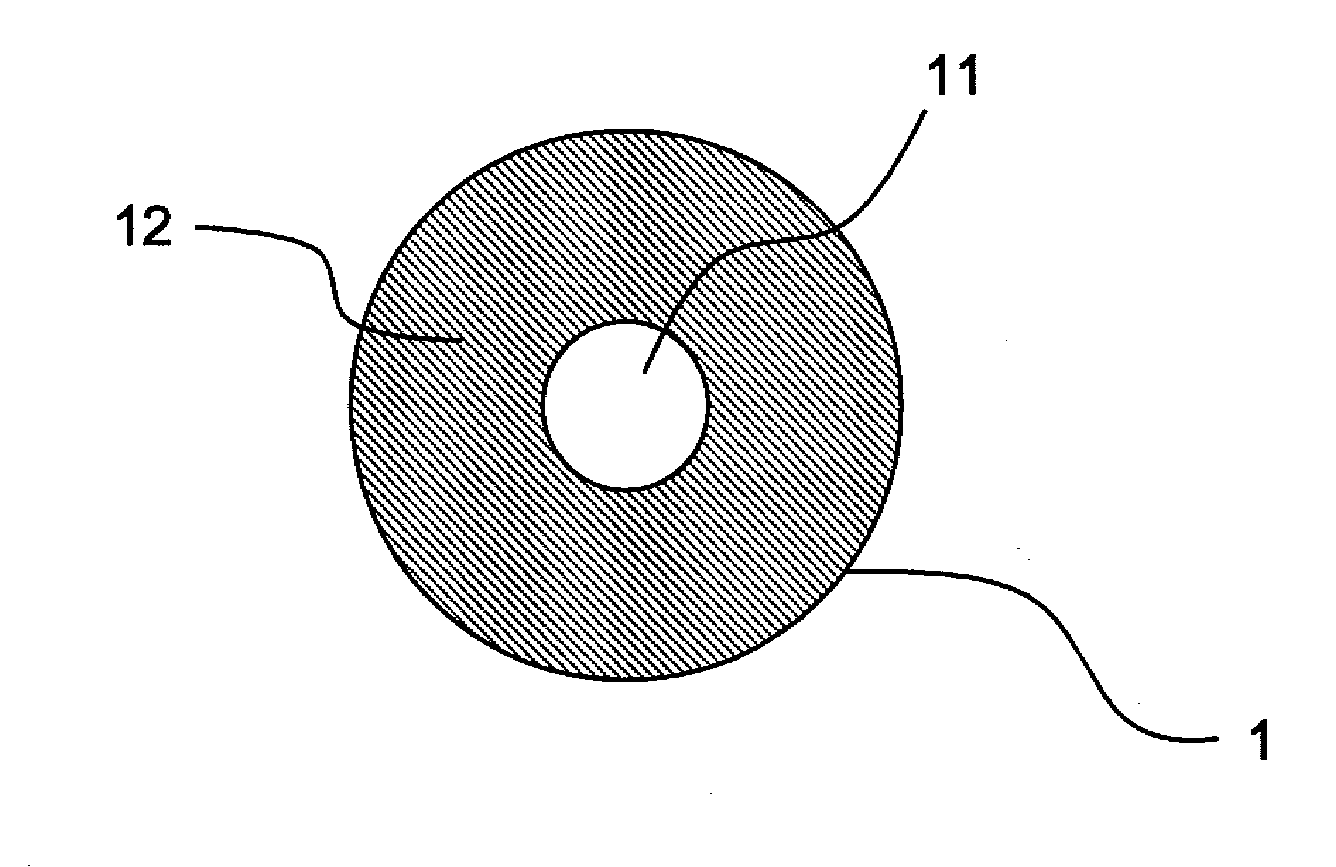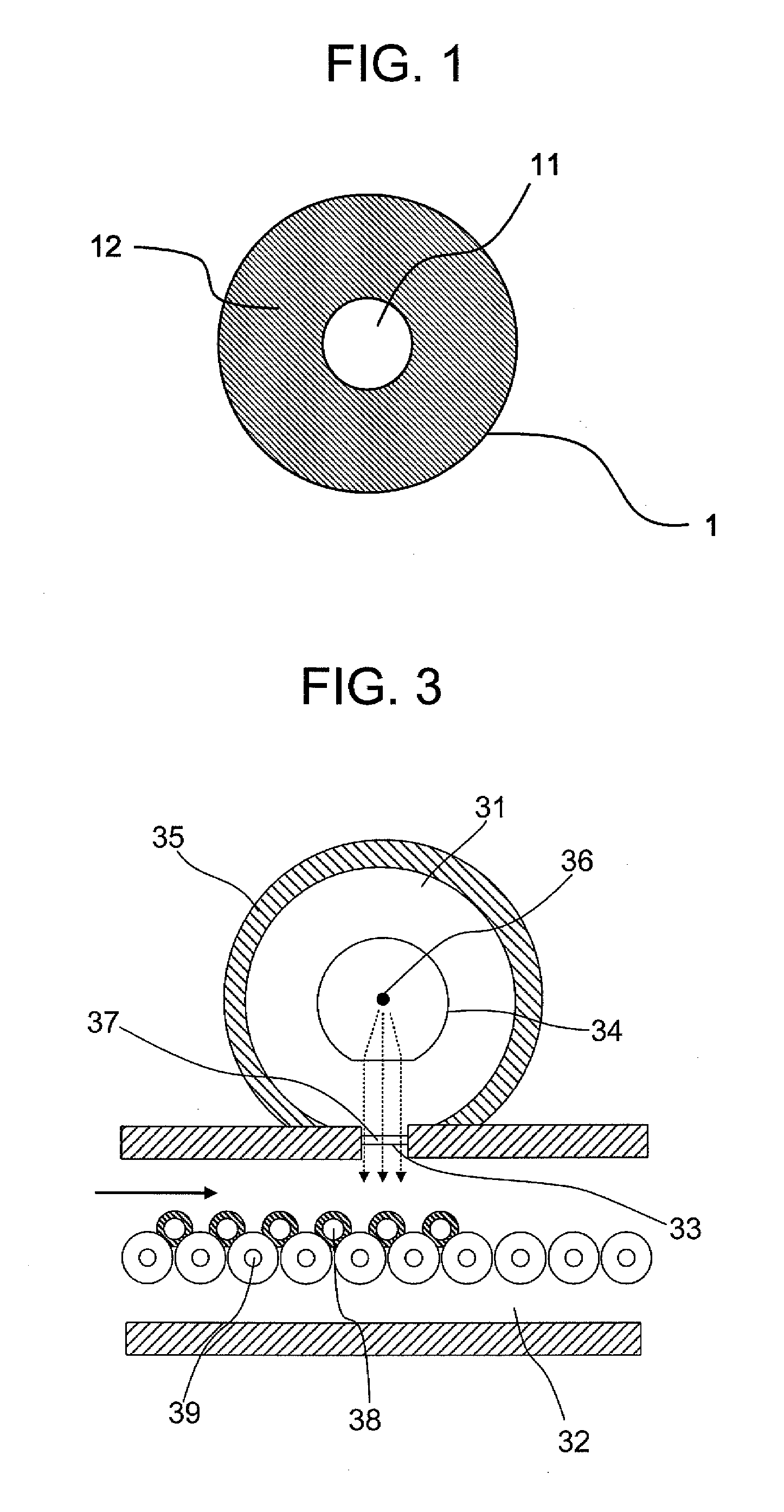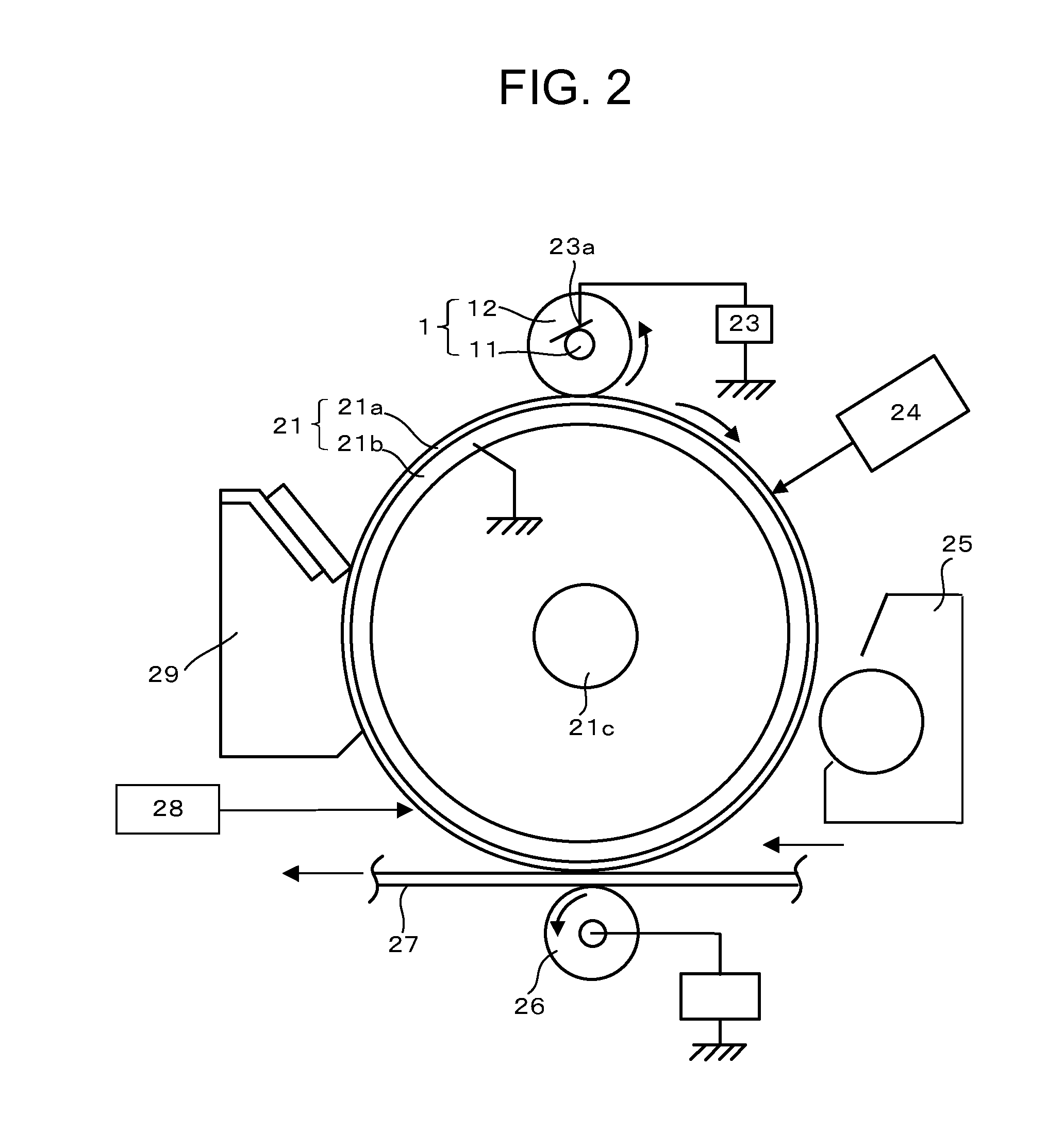Charging member, process cartridge and electrophotographic apparatus
a technology of electrophotography and process cartridges, applied in the direction of electrographic processes, instruments, corona discharge, etc., can solve the problems of toner or external additives being liable to adhere to the surface of elastic layers, and new problems arising from the use of br as raw rubber, etc., to achieve stably forming high-quality electrophotographic images and minimal causes
- Summary
- Abstract
- Description
- Claims
- Application Information
AI Technical Summary
Benefits of technology
Problems solved by technology
Method used
Image
Examples
example 1
Preparation of Rubber Material
[0077]Materials shown in Table 2 below were mixed with a 6-liter pressure kneader at a filling ratio of 65 vol % and a blade speed of 30 rpm for 21 minutes, so as to obtain an unvulcanized rubber composition.
TABLE 2Content (parts byMaterialsmass)NBR (trade name: N230SV,90manufactured by JSR Corporation),content of acrylonitrile: 33%Butadiene rubber (trade name: VCR412,10manufactured by Ube Industries Ltd.)Carbon black (trade name: Tokablack48#7360SB, manufactured by Tokai CarbonCo., Ltd.)Zinc oxide used as vulcanization5acceleratorZinc stearate used as process aid1Calcium carbonate (trade name: #30,20manufactured by Maruo Calcium Co.,Ltd.)
[0078]An unvulcanized rubber composition for an elastic layer was obtained by mixing 174 parts by mass of the thus obtained unvulcanized rubber composition, 1.2 parts of sulfur working as a crosslinking agent, 1.0 part of tetrabenzylthiuram disulfide (trade name: Nocceler TBzTD, manufactured by Ouchi Shinko Chemical In...
example 2
[0100]A rubber material was prepared in the same manner as in Example 1 except that “VCR412” was replaced with “VCR617”, and vulcanized rubber roller 2 was formed from the resultant unvulcanized rubber in the same manner as in Example 1.
[0101]The surface of the vulcanized rubber roller was subjected to the curing treatment through the electron rays irradiation in the same manner as in Example 1, so as to produce charging roller 2. The surface hardness was measured before and after the irradiation and the image evaluation was conducted. As a result, the surface hardness was 1.1 N / mm2 before the electron rays irradiation and was 5.9 N / mm2 after the irradiation. The evaluation for contamination was ranked B and the evaluation for the C set was ranked A.
example 3
[0102]A rubber material was prepared in the same manner as in Example 1 except that “VCR412” was replaced with “VCR450”, and vulcanized rubber roller 3 was formed from the resultant unvulcanized rubber in the same manner as in Example 1.
[0103]The surface of the vulcanized rubber roller was subjected to the curing treatment through the electron rays irradiation in the same manner as in Example 1, so as to produce charging roller 3. The surface hardness was measured before and after the irradiation and the image evaluation was conducted. As a result, the surface hardness was 0.9 N / mm2 before the electron rays irradiation and was 5.3 N / mm2 after the irradiation. The evaluation for contamination was ranked B and the evaluation for the C set was ranked A.
PUM
| Property | Measurement | Unit |
|---|---|---|
| acceleration voltage | aaaaa | aaaaa |
| acceleration voltage | aaaaa | aaaaa |
| elastic | aaaaa | aaaaa |
Abstract
Description
Claims
Application Information
 Login to View More
Login to View More - R&D
- Intellectual Property
- Life Sciences
- Materials
- Tech Scout
- Unparalleled Data Quality
- Higher Quality Content
- 60% Fewer Hallucinations
Browse by: Latest US Patents, China's latest patents, Technical Efficacy Thesaurus, Application Domain, Technology Topic, Popular Technical Reports.
© 2025 PatSnap. All rights reserved.Legal|Privacy policy|Modern Slavery Act Transparency Statement|Sitemap|About US| Contact US: help@patsnap.com



